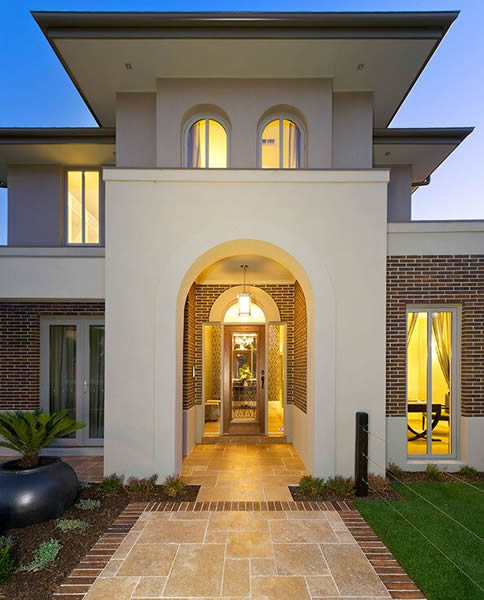
You'll never go wrong with the classics.
How often have you heard this statement? From clothing to interior design, many people advocate this sentiment. However, sticking to the classics can also mean being safe — or worse, boring.
The same thing can apply to the colors and designs you use for interior painting. Why stick to what is safe and conventional when you can add a little fun and energetic vibe to a room?
Here are a few fun (and sometimes offbeat) paint ideas for your consideration.
Patterns
-
Stripes
Fun and unexpected? A stripe pattern may be the farthest from your mind when you think about a bold paint idea. And to a large degree, rightfully so. Stripes have been used since time immemorial.
For a different spin on stripes, instead of sticking to two colors, opt for three. Start by choosing base colors and separate these with a thin white stripe. You can either paint the stripes horizontally or vertically.
-
Waves
If you wish to take a stripe pattern to another level, why not try using a wave pattern? This will help you generate more interest in a room, especially on a feature wall.
Paint the wall any way you want using contrasting or complementary colors. You can even ditch the use of a pattern and freehand everything.
-
Chevron
Chevron is another classic pattern that you can modify for a more fun and exciting vibe.
Instead of using uniform stripes and patterns, you can use oversized lines that connect adjacent walls.
-
Letters and numbers
When painting an office or home workspace, the last thing people consider is going wild with the paint. After all, you want to create a space that is free from distraction and conducive to concentration.
That, however, doesn't have to be a problem. Whether at home or in an office, you can use bold letters and numbers to generate more interest.
At home, you can try using an oversized letter for a subtle yet eye-catching approach. Numbers, on the other hand, can be painted on walls to demarcate and separate spaces. You can use also a short and inspirational or witty phrase or sentence in entryways.
-
Ombre
Ombre is a French term which means blending colors with one another. For painting walls, this technique is achieved by combining hues, starting from the lightest to the darkest.
This pattern is best used on walls and ceilings, creating an illusion of seamlessness.
-
Abstract
If you want to unleash your creativity fully and free yourself from the restraints of a fixed pattern, consider using an abstract design for your walls.
Instead of patterns, try to create a mood by using shapes and colors. You'll find that painter's tape can be an invaluable tool for this type of wall color design.
-
Color blocks
Using large blocks of colors can be intimidating to the uninitiated, but fear not. With the right combination of colors, making a room more interesting becomes a breeze.
If you want to create visual harmony and tie together a room's look, don't venture far from the hues that you have already used.
Alternatively, if you want to create a bold impression, the easiest way to do that is to use two contrasting colors connected by a thick stripe.
Colors
Apart from patterns, you can generate visual appeal with your choice of colors. If you want to breathe life into a space, consider the following colors for your project.
-
Yellow
Yellow evokes a warm, welcoming, and youthful vibe.
Brighter tones like lemon can make any space more vivid. On the other end of the spectrum, darker tones like mustard imbue a homey and inviting feel to a room.
-
Pink
Pink has traditionally been associated with femininity, but don't let the color's reputation prevent you from using it.
The color is best used in smaller spaces like home offices and children's bedrooms where it can add a dash of freshness. You may also use it as an accent color along with gray and brown.
-
Purple
Some designers avoid using purple because it can evoke a sense of youthfulness.
However, when you use it with colors like brown, gray, and black, you will notice that purple can also be sophisticated without losing its playfulness.
-
Orange
Among the brighter colors, orange is also one of the more versatile. It can evoke a sense of youth on one hand and a sense of sophistication on the other.
This makes the color applicable to different types of rooms, from the living room to the home office.
-
Green
Are you up for a difficult but rewarding challenge? Try using green for your painting project.
Compared to other colors, green can be tricky to use. This is because it is affected by the different colors in the room as well as natural light.
The great thing about using this color is that there are different shades that you can choose from, including pastels and mints. Plus, green works well with brown, black and gray.
Straying off the beaten path
If you are looking to add some extra oomph to an otherwise staid look, why not consider going offbeat and choosing patterns, colors and decorative paint finishes that you wouldn't have considered in the first place? You might find what you are looking for from the unexpected.
Like these tips? Read more from our blog.
